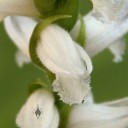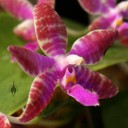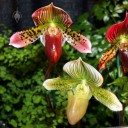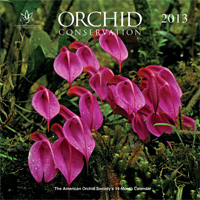Vanilla Orchids: Natural History and Cultivation
Posted December 12th, 2012 by Marc CohenCategories: Books, Fragrant Orchids, Warm Growers
As the most important orchid crop, vanilla is everywhere. Beyond its rich flavor, however, is the story of a surprising plant. Vanilla Orchids: Natural History and Cultivation provides a broad survey of this fascinating orchid. Author Ken Cameron, a botany professor from Wisconsin, unravels the tale of the world’s most popular flavor and fragrance. The book covers the biology, evolution, and diversity of the vanilla family, including vanilla’s unusual orchid relatives. Cameron also explains how to cultivate this tropical crop at home, for those daring enough to try. Dozens of photos highlight vanilla flowers, vanilla farms, and vanilla products. This book makes a great gift for orchid lovers and for bakers who wish to better understand this quintessential kitchen ingredient.













